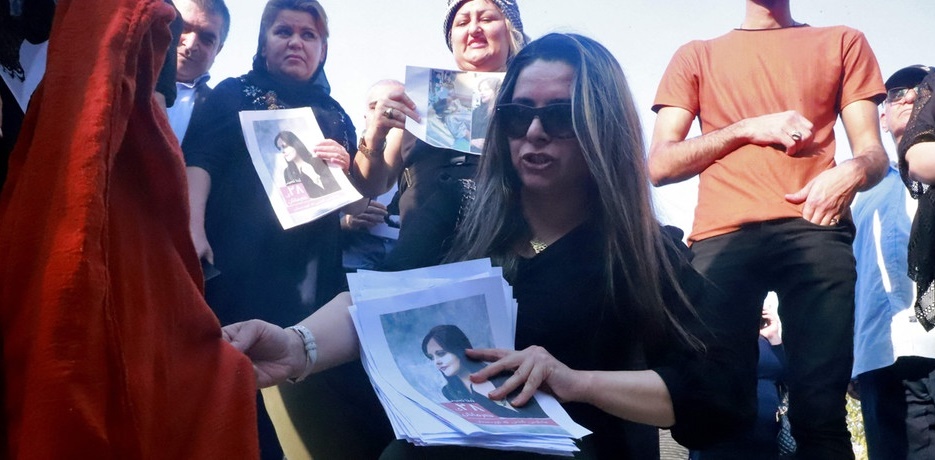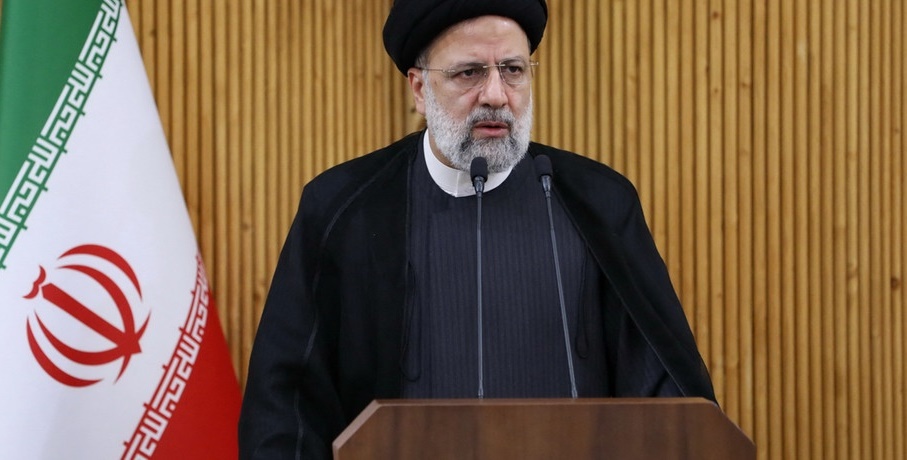Protests continue after Mahsa Amini’s death
After the death of a young woman. Thousands demonstrate in Iran / Protests continue after Mahsa Amini 's death

Thousands of people protested in the Iranian capital Tehran after the death of a 22-year-old woman in police custody. The police sometimes used violence against demonstrators. The US demands clarification. Protests continue after Mahsa Amini ‘s death
Thousands of people protested in the Iranian capital Tehran after the death of 22-year-old Mahsa Amini in police custody. Hundreds of demonstrators gathered on Keshawar’s central boulevard alone in the evening, according to the Iranian news agency Fars.
The police sometimes used water cannons and batons against the crowds. Demonstrators are said to have set garbage cans on fire and thrown stones. However, the majority of the protests were peaceful.
Mahsa Amini: Massive police presence on the street
According to eyewitnesses, the police and security forces in the city were out in force on the streets. According to eyewitnesses, people gathered in Volkspark Mellat, and some shouted slogans critical of the regime. Several women took off their headscarves in solidarity with Amini.
Clashes and reports of gunfire
Many people also took to the streets in other cities and in Amini’s home province of Kurdistan. According to media reports, there were also clashes between security forces and demonstrators.
According to reports that have not been independently confirmed, shots were also fired in the city of Diwandareh. There was initially no official confirmation. In several places, the participants in the protests shouted: “We are not afraid, we are all together” – a slogan that became well known during the demonstrations after the disputed presidential election in 2009.
Mahsa Amini / Arrests by the police
The state-run Iranian news agency Fars reported that around 500 demonstrators gathered in Sanandaj, the capital of the Kurdish region, on Sunday. “They shouted slogans against those in charge of the country,” Fars reported. Car windows were smashed and rubbish bins set on fire. The police used tear gas to disperse the crowd. There have been several arrests. “Numerous protesters are convinced that Mahsa Amini died as a result of torture,” Fars wrote.
Great sympathy and dismay
The case has also sparked great sympathy and dismay internationally. The US is demanding accountability for Amini’s death, a spokesman for the White House National Security Council said. “Mahsa Amini ‘s death after injuries sustained in police custody for wearing an ‘inappropriate’ hijab is a appalling and egregious affront to human rights,” the spokesman said.
Filmmakers, artists, athletes, politicians and religious representatives living in Germany and abroad also expressed their outrage at the death. On the Internet, many Iranians mourned the young woman who was arrested by the moral and religious police on Tuesday during a family visit in Tehran because of her “un-Islamic” outfit and taken to a police station. According to the police, she fainted and then went into a coma because of heart failure. Her death was confirmed on Friday.
However, another version was also circulating online. Amini was arrested because her headscarf didn’t fit properly and a few strands of hair could be seen. After the arrest, her head was banged against the window in the police car, causing a cerebral hemorrhage. The police vehemently denied this account.
After her death, the clinic where the 22-year-old was treated wrote in a since-deleted post on Instagram that Amini was already brain dead when she was admitted on Tuesday.
Police deny any guilt
The police again rejected any blame for the death of the young woman. The allegations are “baseless,” said the capital’s police chief, Hussein Rahimi, according to the news agency Mehr. The police are always trying to ensure that such cases do not occur, said Rahimi. “It’s our job by law to remind women of the dress code,” said the police chief. However, they did not harm the woman, Rahimi assured.
The police and the government of President Ebrahim Raisi have been at a loss for explanations since Amini’s death and the nationwide criticism. The police tried to prove her innocence with several unverifiable video recordings. The conservative newspaper “Keyhan”, which is considered the voice of the hardliners, and other politicians in the government supported the version. They accuse the critics of wanting to stir up unrest against the Islamic Republic and spread lies. At the same time, Raisi ordered the case to be thoroughly examined.
According to her father, Amini was “perfectly healthy”
The victim’s father, Amjad Amini, made it clear that he did not accept the explanations given by the police. He also criticized that the rescue workers came to his daughter too late. He also rejected government claims that his daughter had previous illnesses. His daughter was “very healthy,” he said.
Iran has had strict dress codes since the Islamic Revolution in 1979. In the metropolises and wealthier districts in particular, many women now see the rules as rather relaxed – to the annoyance of ultra-conservative politicians. The government under President Raisi and hardliners in parliament have been trying for months to enforce Islamic laws more strictly. The vice police sometimes enforce the dress code with violence.
Putin travels to Iran for talks with Raisi and Erdoğan
Authorities warn: Iran could plan an attack on Trump
A rights watchdog said that five people were killed in a crackdown on protests that broke out after the death of 22-year-old Mahsa Amini, who had been detained by Iran over dress code violations. https://t.co/ZgTEHxsLKN
— The Washington Post (@washingtonpost) September 20, 2022
The regime shows no mercy

A 22-year-old in Iran dies in police custody – arrested for inappropriate clothing. And in other areas of life, too, the regime hardly gives its citizens any room to breathe. It takes a lot of strength to defend yourself.
It’s the sentence of a young woman from Tehran that should speak to the soul of many in Iran, whether conservative or not: “They up there just don’t take care of us.”
There would be enough to worry about. Poverty in the country is getting worse because the prices of even staple foods such as rice are rising so much that even people from the former middle class can hardly afford them.
Added to this is the isolation of the country. Because of the US sanctions, doing business with other countries is only possible via various expensive detours, Iranians have great problems getting visas for other countries, and there is also nepotism – and the like.
But instead of reviving the nuclear agreement, which could at least provide some relief – and thus also fulfill the election promise – President Ebrahim Raisi and those pulling the strings in Tehran are repeatedly dragging out the negotiations with the remaining partners and indirectly also with the USA.
Some Iranians say: They are not primarily concerned with leadership. What they want is a better life without a struggle for existence, after all Iran has natural resources, i.e. gas and oil. And they want more freedom.
For a few months it had looked as if the leadership would at least leave a tiny outlet to withstand the economic pressure. Contrary to expectations after the election of the ultra-conservative Raisi, the moral police did not intervene as women gradually let their headscarves slide further and further back as they wore blouses that barely covered their buttocks and cropped T-shirts with wide necklines .
At the beginning of the summer, however, Tehran radically and brutally made it clear that this was over. Pure oppression is used to give people no chance to breathe.
They are literally drummed into alleged Koran rules about modest clothing with a headscarf. With the result that Iran – as an Iranian once put it – is a Muslim country without Muslims. That may not apply to rural regions or to the whole of Tehran, but it does describe the distance between religious leadership and the people.
Religion is repugnant to many, especially young people. For this, their government punishes them day after day, giving them one blow after the other. Fear, despair and depression are palpable in the country.
Many hardly have the strength to endure all this, let alone to resist taking to the streets. You would risk your life.
Mahsa Amini probably had to die because she still had enough strength not to give in to a vice squad’s brainwashing. It is high time that Supreme Leader Khamenei, Raisi and the rest of them really took care of their people – only they are a world away from that.

